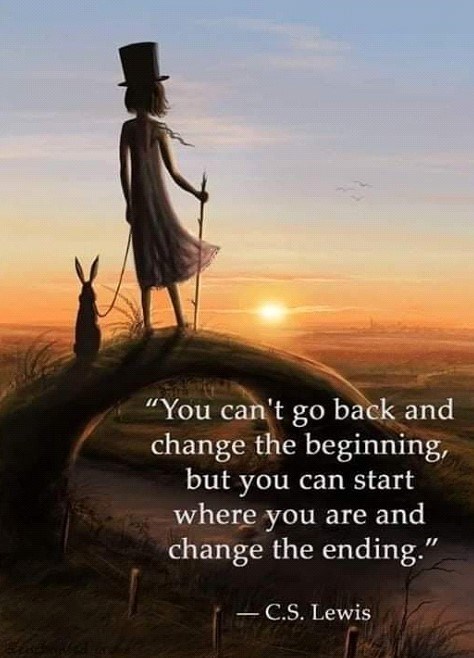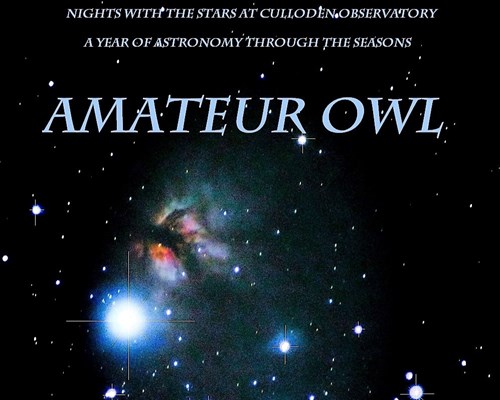
AMATEUR OWL (What’s Up In The September Night Sky)
Added on 14 September 2023
SEPTEMBER SKIES
AUTUMN
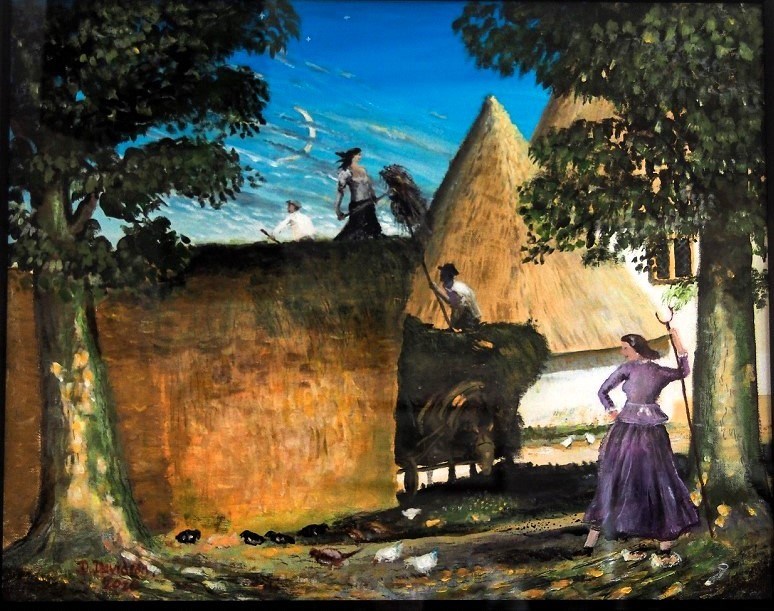
THE MONTH OF SEPTEMBER
It is the first day of September and summer is officially over. The Sun is lowering with each passing day and the nights are drawing -in. The swifts have gone home and the migrant waterfowl have started to replace them. With the first Moon of the month the pink-footed geese will be heard at night, high and unseen they call out like celestial hounds, inbound from Greenland and Iceland to glean the stubble fields of wheat and barley seeds left by the harvest. It is almost dark at nine o’clock in the evening and Capella shines bright in the North East as the first stars appear in the night sky. Time now for the hibernating amateur astronomers to awake and chase the spiders from their telescopes, shake the dust from winter boots and woolly jumpers to be ready for when the first cloud-free nights come. Ah! Cloud-free nights?
Most of us can’t see into the future and there are few who claim to be able to. But of these few most of them work for the Meteorological offices around the world. The world of ‘wobbly’ jet-streams, storms with names, highs and lows, sunshine and showers. It would be nice to think that we could predict the motions of the clouds, where they will form and in what density, particularly next Friday night let’s say, when we want to go star-gazing but this is impossible and it is fanciful to think otherwise. We religiously check our ‘apps’, watch ten-day ‘deep-dives’, look at satellite images and convince ourselves it is a science and to be taken seriously but it is just a vanity and the clouds continue to please themselves where and when they come and go. The only truly reliable weather data is of the moment. You know it’s windy when you look out of the window and there is something like a rubber glove barking in the garden….. it’s your dog blown inside out!
So this is why it is better to have impromptu star-gazing nights. Be ready, and when the moment arrives, you go.
September is a great month to view the night sky so let’s head up to the observatory at Culloden and get started.
It is a cold night and a light breeze is blowing from the East; a lazy breeze, which goes through you rather than round you and some high, thin clouds are streaked across the sky to the West. The ground is wet from some earlier rain and a damp, earthy smell is in the air. You are alone for now at least, and you take a moment to look up at the stars before you set up the telescope. The sky is black and the early autumn constellations seem lost among the thousands of bright winking lights that fill the firmament. The air has been washed clean and seems to glow with a faint ethereal radiance that can only be star-light and away in the distance to the South, the rounded shapes of the hills are etched in indigo against the dark sky. High above, the Milky-Way arches in a silver band of astonishing detail and here and there along its path, great voids of unfathomable darkness can be seen. Long minutes pass while you simply stare in wonder at the beauty, the immensity and the profound nature of what is out there when suddenly the reverie is broken as a rock from the depths of space enters the atmosphere and streaks across the night, burning green and sapphire. Vanishing in seconds but leaving a thin wispy trail before that too melts into the void. Eager now to start mining the gems of the September sky, you finally get round to fixing up your telescope and setting out your stall of eyepieces, star-maps, batteries, wires and the general clutter of bits that attend these proceedings. From up toward the entrance road too, car headlights sweep the darkness; the first heart-warming indication that you will have company, and so begins an impromptu night at the observatory.
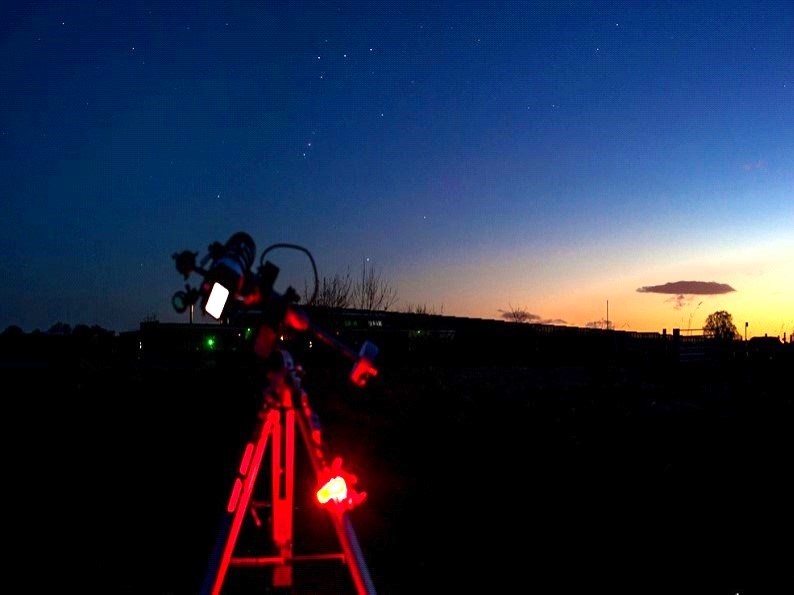
What to see?
The constellations of September after dark are dominated by Pegasus the flying horse, Cygnus the swan, Queen Cassiopeia, Andromeda, King Cepheus, Perseus and the ever-present giant bear that is Ursa Major. Ursa Major was once a nymph named Callisto who had a son called Arcus as a result of the infidelity of Zeus. The wife of Zeus, Hera, turns Callisto into a bear to spite him and Arcus almost kills her while out hunting. She is saved by Zeus at the last minute when he threw them both into the sky. And that is how the bear has a long tail. From the great square of Pegasus extends Andromeda, who is chained to a rock and about to be devoured by Medusa, but is saved by Perseus who kills the monster with his sword, and the jewelled handle of that sword is what we see as the ‘double cluster’ NGC 869 and NGC 884 together also known as Caldwell 14 from Patrick Moore’s list. On a dark night away from the street lamps you can see this with just your eyes alone but with binoculars or a small telescope they are one of the most impressive of the star-clusters that dot the Milky Way in the northern hemisphere.
If you are doing the ‘Messier Challenge’ and wanting to tick some boxes then a night in September is just what you need and as the months of Autumn progress it just gets better. Only getting started on that journey? How about M31, M52, M27, M52 & M33 for the first challenge; they are all here tonight along with many more that are maybe a bit harder to find, unless you have a ‘GOTO’ telescope of course! If you need any help or advice about finding the Messier fuzzies then ‘Professor’ Paul Moffett is the man to speak to. He has just completed the bronze, silver, gold and platinum lists and knows all the quirks of finding even the faintest of these elusive objects.
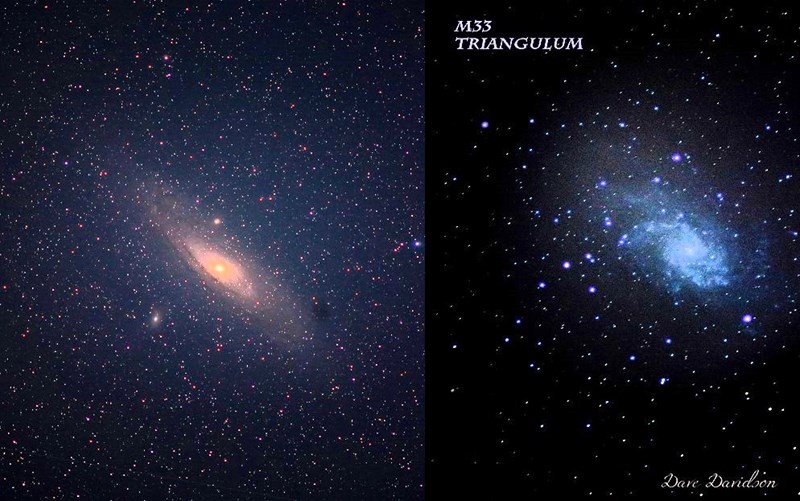
M31 in Andromeda. M33 in Triangulum.
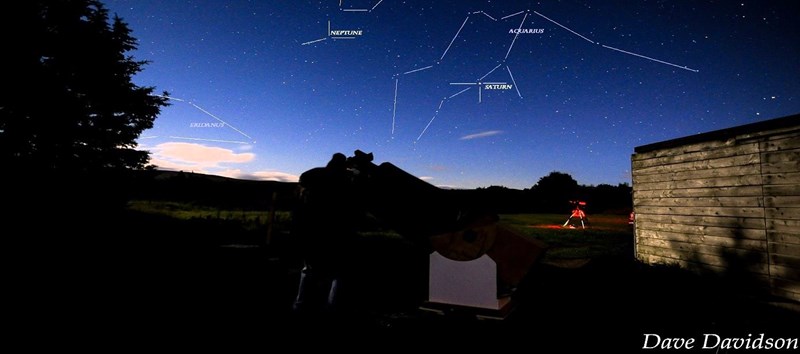
THE PLANETS
Let’s start with the big ones. Saturn is in Aquarius this month, to the South East about 9.30pm and looks just like a yellow star to the naked eye, lying amid the fainter stars of the constellation. It hardly looks worth the pain of perusal at first sight but if you turn the 12 inch or the 14 inch telescope to point at it you will see something that will stay in your memory forever! Now the yellow dot is transformed into a glowing orb, ringed with a shallow translucent disc separated by dark lanes. Shadows cast upon the face of the banded ball, black as soot and just wondrous to look at. In attendance, four of the largest moons; Titan, Rhea, Dione and Enceladus dance a celestial waltz in the darkness of space 886 million miles from the Sun. The light from Saturn takes an hour and twenty minutes to reach us. What can you say? Probably just “WOW”.
Further to the East and unmistakable amid the stars of Cetus, Taurus and Aries is Jupiter. Blazing out in orange brilliance. You only need spend a couple of hours watching Jupiter with even a small telescope to see the solar system in motion. When Io is behind the planet it literally takes minutes to emerge from the limb. Quite the most astonishing sight.
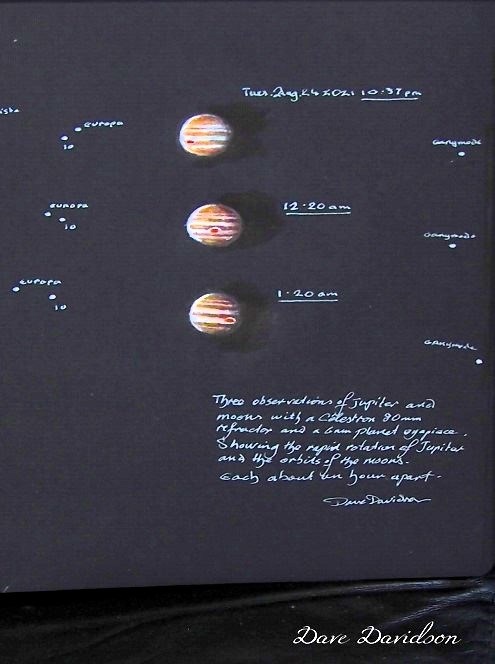
Neptune and Uranus too are able to be spotted in September. Find them with a GOTO telescope or challenge yourself to star-hop them. Star-hopping them might prove a road to insanity though so maybe just use the Club’s computer control to find them! Pale blue dots among an ocean of stars.
For serious ‘night-owls’ or insomniacs, Venus rises in the East before dawn and lies underneath Cancer the crab. In a small telescope or even binoculars it shows itself to be a wafer-thin crescent and is bright enough to be seen throughout the day. Be careful if you want to look for it in daylight though as the Sun will blind you if you sweep through it by accident. Use a compass at midday to find the south meridian and search vertically from the horizon. It will cross the meridian line about 10.45 am at the start of September and be 44 degrees elevation. Even better would be to use the setting circles on your telescope. Can't go wrong with those. If you can safely pull it off this is what you will see.
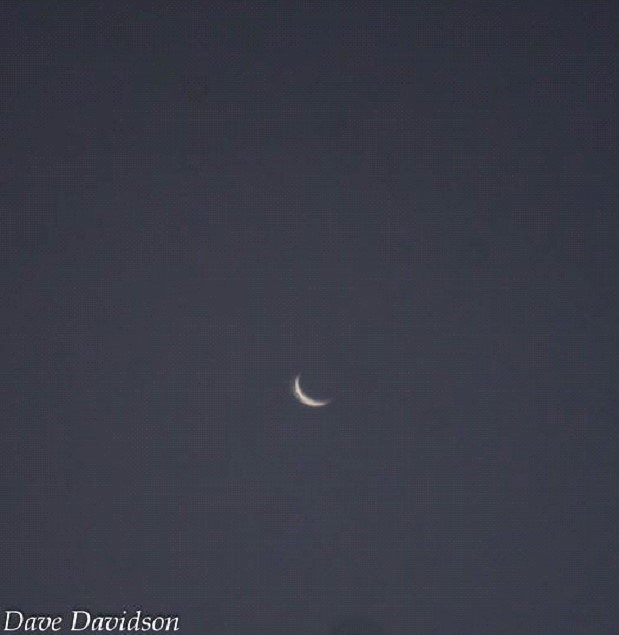
Toward the end of the month you might try looking for the elusive Mercury in the dawn sky about 5am but no promises here; it is faint and it will be getting light.
The Moon and the Autumn Equinox
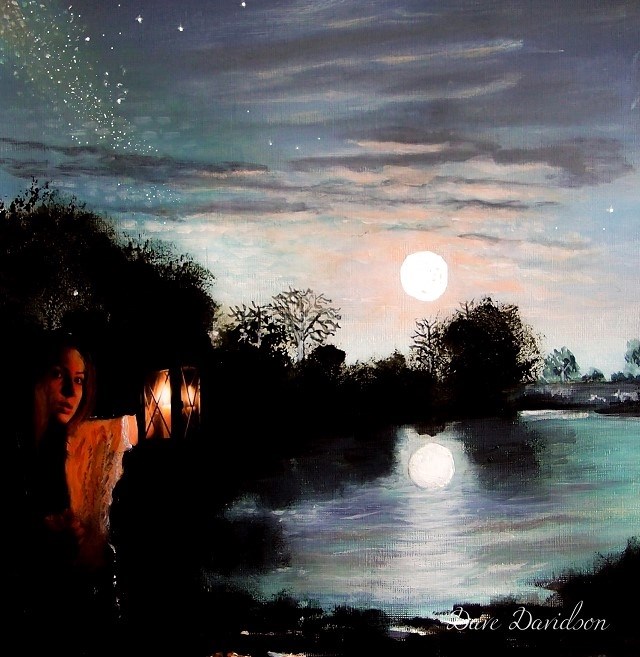
The autumn equinox will be on Saturday, September 23rd, with the sunrise at 6.57am and sunset at 7.04pm marking the time of equal night and equal day.
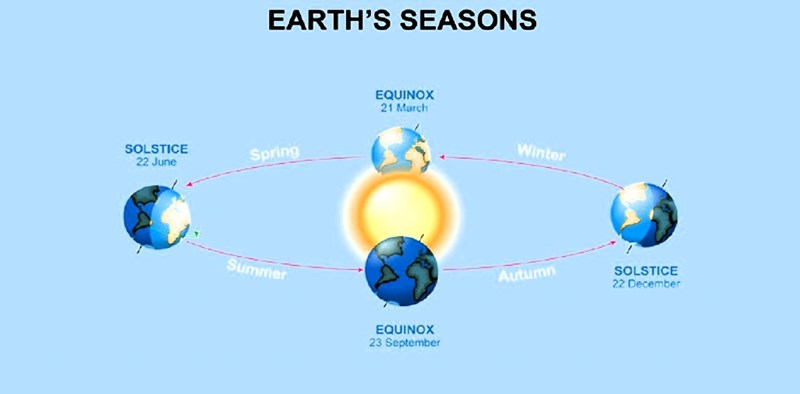
If the weather is kind and it is a good night for stars and the moon then we hope to have a barbecue at the observatory to mark the night of the equinox. We can dine in style and then study the vagaries of the Moon’s passage along the ecliptic, take a look at the wonders of the mountains, rivers and craters with a big telescope or simply bathe in the silver glow that only Selene can provide. Keep an eye on the website for details later.
The blue super Moon has just passed at the end of August but the next full moon will be on the 29th of September and will rise due East at about 18.30hrs. Daylight will be fading just as the moon comes up and will present a perfect opportunity for a photograph. The dynamic range between the twilight and the moon will be as Goldilocks once said about the baby bear’s porridge….“Just right”.
We need not wait until then to view the Harvest Moon though. It returns from new on the 18th and night by night there is more to see as the phases grow toward full again.
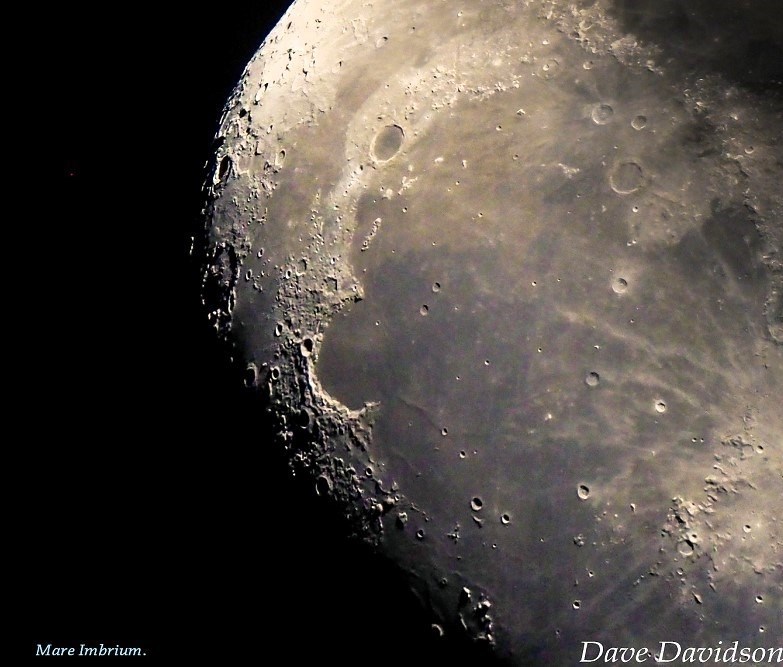
Even with binoculars there is much to see on the moon and often when set amid the clouds, the view from binoculars is hard to match in beauty.
If all this is not enough to keep you busy there is one more thing to look for in September and that is the Aurora Borealis. The Sun is very active at the moment and solar flares, spots and prominences abound! Any night can produce an aurora and it is well worth checking ‘apps’ for alerts or follow the notices on our ‘WhatsApp’ group. If you have never seen this wonder of the night sky then now is your chance to witness the greens and violets of the eerie ribbons of light that roam the Northern horizon. Look under the great bear for tell-tale signs, where just a mild, glowing arc can explode into towering spires and waves without warning. If you want to record these awesome sights with your camera then Lisa Pattenden is the person to seek out. She is the eyes on the universe for Aurorae.
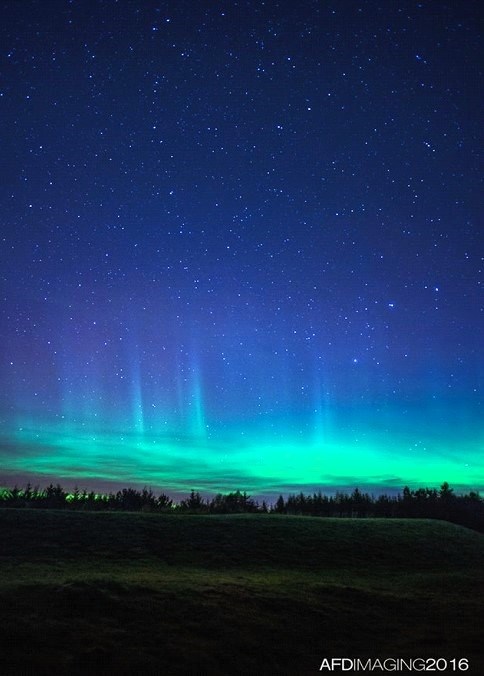
So our ‘virtual’ night at the observatory comes to an end and it is time to reflect on what we have seen before we head for home to tea and toast and the warm of the fireside.
We have seen the whirling moons of the giant planets, faint wisps of gossamer galaxies, stars clustered together like crowds at a market place, and seen the solemn march of the constellations circle the pole.
As always, up at the observatory on a starry night with friends to share the wonders of the night sky, it has been a unique experience. The timeless nature of this romance with the universe never fails to thrill and excite. The shackles of the mundane are cast aside and a new world beckons the enquiring mind into a portal of discovery that as humans we have long ago lost the keys to.
